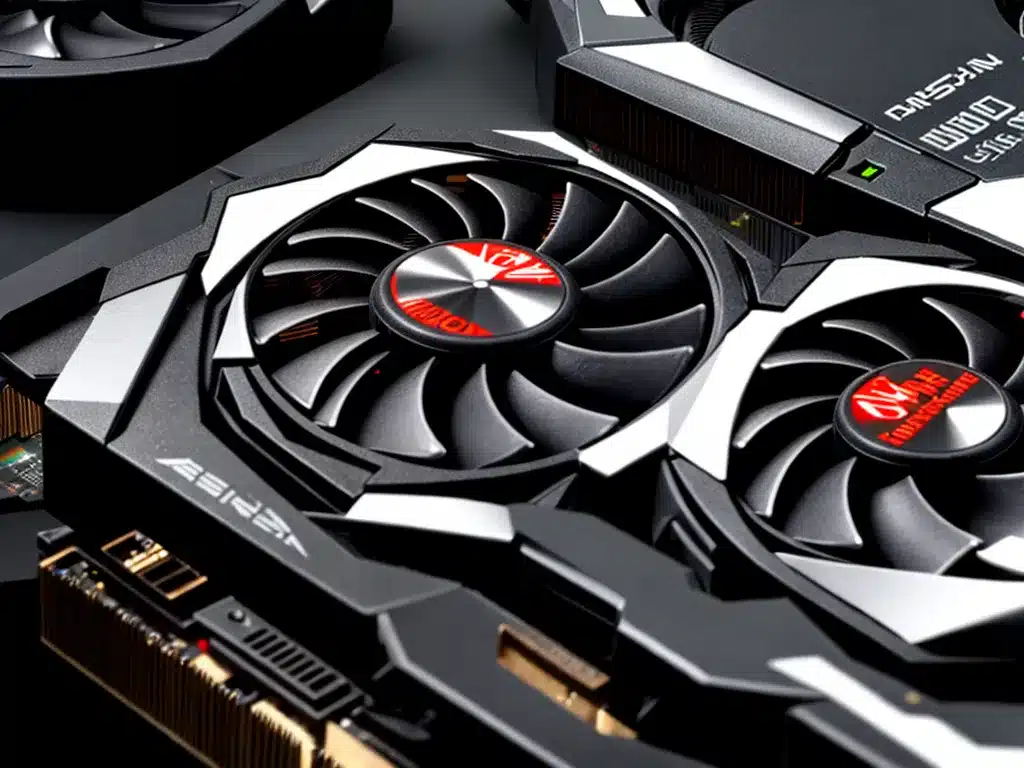
How to Choose the Right Graphics Card
Choosing the right graphics card can seem daunting, but it doesn’t have to be! Here’s my guide to picking the perfect GPU for your needs and budget.
Determine Your Goals and Budget
Before shopping for a graphics card, you need to decide what you plan to use it for and how much you want to spend.
Set Performance Goals
What do you intend to do with your new GPU? Some key considerations:
- Gaming: What resolution and frame rate are you targeting? Do you play AAA titles or competitive esports games?
- Creative work: Will you be video editing, 3D modeling, or doing GPU-accelerated tasks?
- Machine learning: Do you need CUDA cores for deep learning and AI development?
Setting clear performance goals will help narrow your options.
Consider Your Budget
Graphics cards range greatly in price from under $100 to over $1000. Decide how much you’re comfortable spending before you start shopping.
Some rough guidelines:
- $100-200: Basic 1080p gaming and display outputs
- $200-300: Smoother 1080p, entry-level 1440p
- $300-500: High fidelity 1080p, solid 1440p, budget 4K
- $500-800: Quality 1440p gaming, 4K capable
- $800+: Ultra settings and frame rates for 4K or high refresh 1440p gaming
Research GPU Specifications
Once you know your performance needs and budget, dig into the key specs of current graphics cards to find viable options.
Pay Attention to GPU, Memory, and Outputs
-
GPU (Graphics Processing Unit): This is the main processor and determines performance. Newer, faster models are better. Pay attention to model names from AMD or Nvidia.
-
Video Memory: Amount of memory determines resolution and texture quality you can run. 4GB is minimum for 1080p gaming. 8GB is recommended for 1440p+ resolutions.
-
Outputs: Ensure the GPU has the outputs (HDMI, DisplayPort, DVI) to connect your monitor(s).
Consider the Interface and Power Requirements
-
Interface: Newer PCIe 4.0 x16 slots provide more bandwidth but are backwards compatible. Avoid older PCIe 3.0 or PCI slots.
-
Power: GPUs need extra power from PSU cables. Budget cards may just need 75W from the PCIe slot. High-end cards can require multiple 8-pin connectors.
Compare Benchmark Scores
- Benchmarks: Compare FPS (frames per second) in benchmarks to gauge real-world performance for gaming. Synthetic benchmarks also provide a standardized metric.
Match Your Needs to a Specific Model
With your performance needs and budget in mind, you can now filter down options to a specific make and model.
Consider the Brand and Variant
The two main consumer GPU vendors are AMD and Nvidia. Within each brand are different models segmented by power and price:
-
AMD: RX 6500 XT, RX 6600, RX 6600 XT, RX 6700 XT, RX 6800, RX 6800 XT, RX 6950 XT
-
Nvidia: GTX 1630, RTX 2060, RTX 3050, RTX 3060, RTX 3070, RTX 3080, RTX 3090
The variant (XT, Ti, Super) denotes a more powerful version of a base model.
Read Reviews and Benchmarks
-
Reviews: Read professional reviews analyzing the real-world gaming performance, noise, heat, and overclocking potential.
-
User feedback: Check user reviews to hear unfiltered opinions from other gamers who have tested the GPU.
-
Benchmarks: Compare FPS test results in benchmarks for the games you actually play.
Consider Accompanying Specs
-
Cooling: Many third party cards have upgraded cooling solutions like multiple fans and heatsinks. This affects thermals and noise.
-
Factory overclock: Some models come pre-overclocked for extra performance out of the box.
-
Software: GPUs may come with accompanying software like game optimization tools.
Find the Best Deal
Armed with your selected model, you can now hunt for the best bargain!
Check Multiple Retailers
Prices fluctuate often, so compare across retailers:
- Online marketplaces like Amazon and Newegg
- Local computer stores
- Direct from AMD/Nvidia
Consider Buying Used/Refurbished
Used or refurbished cards can provide big savings. Check forums or eBay for reputable sellers offering warranties.
Wait for Sales Around Major Launches
When new GPUs hit the market, prices on existing models tend to drop. Watch for promotions during seasonal sales events too.
Bundle Components for Added Value
Some retailers offer GPU bundles with CPUs, motherboards, RAM or games for extra savings.
Install and Optimize Your New Graphics Card
You did it! Follow these tips when setting up your new GPU:
- Use proper anti-static precautions when handling.
- Install the latest GPU drivers from AMD/Nvidia.
- Enable PCIe Resizable BAR in your motherboard BIOS for performance gains.
- Try overclocking the GPU core and VRAM for free extra power.
- Adjust fan profiles if the default acoustic profile is too loud.
- Run benchmarks again to validate your new speeds and enjoy your upgraded gaming PC!
With the right research and shopping tactics, you can find the perfect graphics card to meet your needs and budget. Just determine your goals, understand key specifications, and find the best deal. Then install, optimize, and game on!












